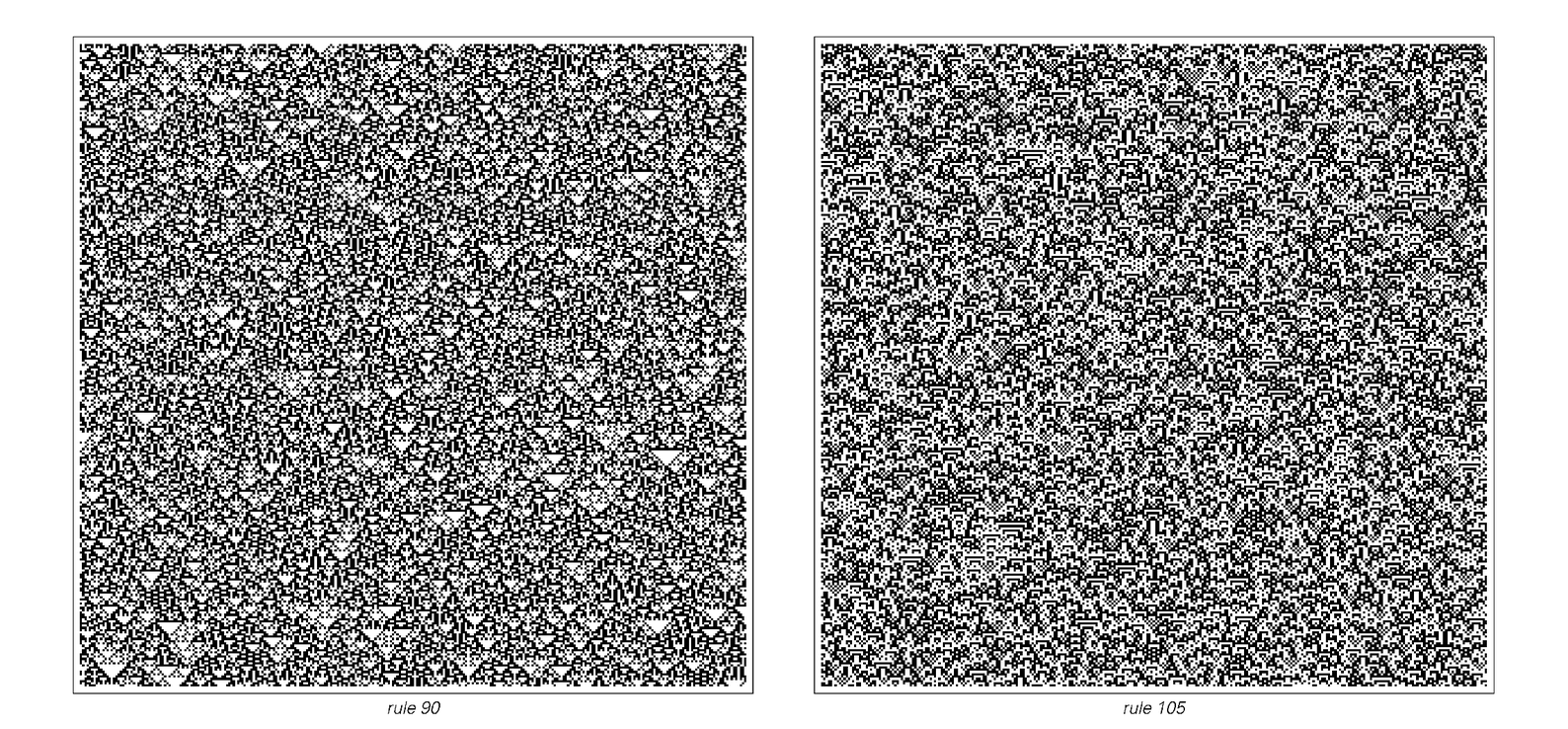The pictures below and on the previous page show more examples of cellular automata with similar behavior. There is considerable randomness in the patterns produced in each case. But despite this randomness there are always triangles and other small structures that emerge in the evolution of the system.
So just how complex can the behavior of a cellular automaton that starts from random initial conditions be? We have seen some examples where the behavior quickly stabilizes, and others where it continues to be quite random forever. But in a sense the greatest complexity lies between these extremes—in systems that neither stabilize completely, nor exhibit close to uniform randomness forever.
The facing page and the one that follows show as an example the cellular automaton that we first discussed on page 32. The initial conditions used are again completely random. But the cellular automaton quickly organizes itself into a set of definite localized structures. Yet now these structures do not just remain fixed, but instead move around and interact with each other in complicated ways. And the result of this is an elaborate pattern that mixes order and randomness—and is as complex as anything we have seen in this book.

Two more cellular automata that generate various small structures but continue to show seemingly quite random behavior forever.



